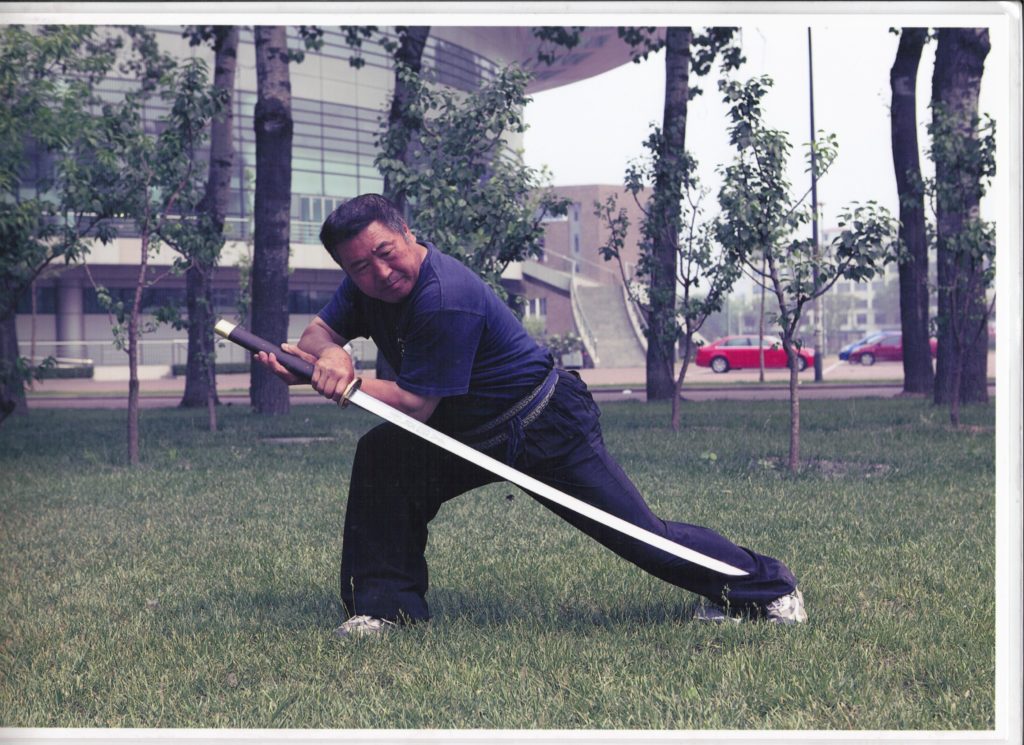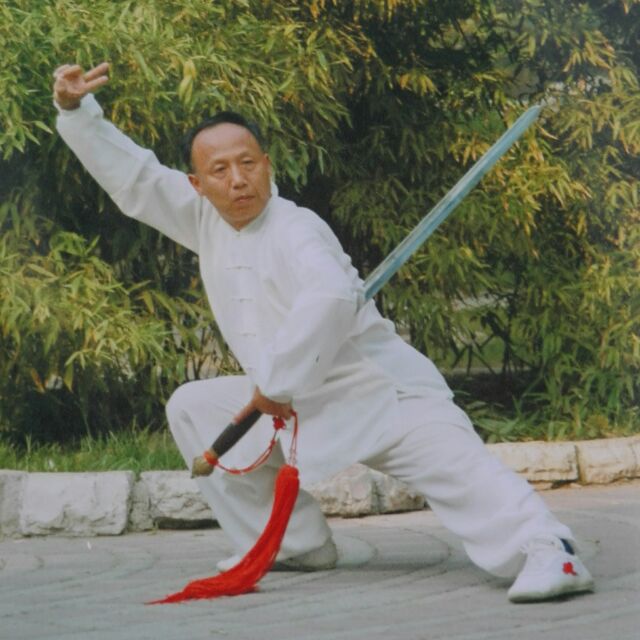Your form should be beautiful. It should look unhurried, graceful, easy and effortless. It should not be painful to watch, putting observers into distress. If you put people in distress, you are not doing Bagua.
-MASTER GE GUOLIANG
A “sister” martial art to Taichi, Baguazhang, or simply, Bagua, is known for its coiling movements and low stances. As with Taichi, Bagua emphasizes rooting, stability, speed, evasion and power. Click here to see Grand Master Ge Guoliang, his senior student Master Yuan Pengfu, and various disciples, demonstrate various Bagua forms and drills.

Class Description:
- We will be learning how to translate force efficiently and therefore, powerfully, through your entire body—all while staying balanced and centered.
- We will also explore the dynamics of quick directional changes and how to coordinate each minute movement of your feet with the movement of your knees and hips (and vice versa)…each minute movement of your knees and hips with the movement of your pelvis and trunk (and vice versa)…each minute movement of your pelvis and trunk with the movement of your neck, shoulders, arms and hands (and vice versa).
- We will compare how movements from Taichi/martial arts are similar to, yet fundamentally different from those performed in dance and athletics. In doing so, we will begin to see how movements from from Taichi/martial arts can crossover to and thus, enrich the movements performed in dance and athletics.
What to Expect:
- Dancers can expect to expand their movement repertoire in far reaching ways—discovering, perhaps for the first time, the intrinsic dance of martial arts.
- Athletes can expect to improvements in power, agility, coordination and fluid motion.
- Both can expect to learn ways to move that protect the entire spine as well as the knees and ankles (and other joints).

